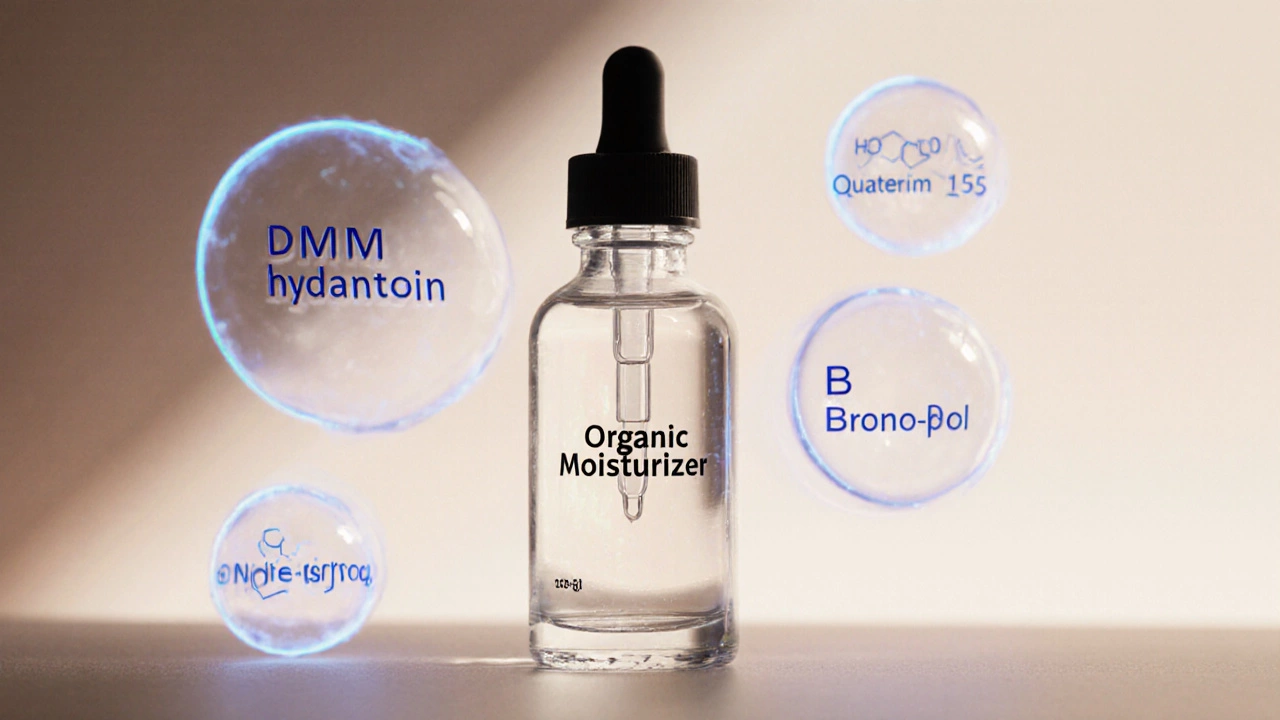Formaldehyde Releasers in Cosmetics: What You Need to Know
When you see formaldehyde releasers, chemicals that slowly release small amounts of formaldehyde to prevent microbial growth in cosmetics. Also known as formaldehyde donors, they’re used in everything from shampoos to nail polishes to keep products shelf-stable—but they’re not harmless. Unlike direct formaldehyde, which is banned in many cosmetics, these releasers slip through regulations because they don’t list formaldehyde on the label. Instead, you’ll see names like DMDM hydantoin, imidazolidinyl urea, or quaternium-15. These aren’t ingredients you want lingering on your skin, especially if you have sensitive skin, eczema, or allergies.
These chemicals are linked to contact dermatitis, redness, itching, and even long-term skin barrier damage. A 2021 study from the British Journal of Dermatology found that over 12% of people with chronic facial rashes tested positive for reactions to formaldehyde releasers—many didn’t even realize their moisturizer or conditioner was the cause. And it’s not just about irritation. The International Agency for Research on Cancer classifies formaldehyde as a known human carcinogen, and while the amounts in cosmetics are low, repeated exposure adds up. You don’t need to panic, but you do need to know what to look for. Many brands now avoid these entirely, opting for safer alternatives like potassium sorbate or benzyl alcohol. If you’re switching to cleaner products, checking for these names should be part of your routine.
Formaldehyde releasers show up most often in water-based products where bacteria can grow easily—think liquid foundations, conditioners, body washes, and baby wipes. Dry products like powders or lipsticks rarely need them. And while some brands claim they’re safe at low levels, safety isn’t just about concentration—it’s about cumulative exposure. If you use five products a day, each with a different releaser, you’re getting multiple tiny doses. That’s why people with sensitive skin often feel better after switching to brands that use no formaldehyde releasers at all. You’ll find a growing number of them listed in our product reviews, especially in the organic and clean beauty space.
There’s a simple trick: learn the top five names and scan your ingredient lists. DMDM hydantoin, imidazolidinyl urea, diazolidinyl urea, bronopol, and quaternium-15. If you see any of these, ask yourself: is this product worth the risk? Most of the time, the answer is no. You don’t need formaldehyde to keep your shampoo from going bad. There are better ways. And if you’ve been struggling with unexplained breakouts, redness, or dry patches, cutting these out might be the change your skin has been waiting for.
Below, you’ll find real product breakdowns, brand analyses, and ingredient guides that help you spot these hidden chemicals—and find safer alternatives without sacrificing performance. Whether you’re cleaning up your skincare routine or just trying to understand what’s really in your beauty products, these posts give you the facts, not the fluff.

